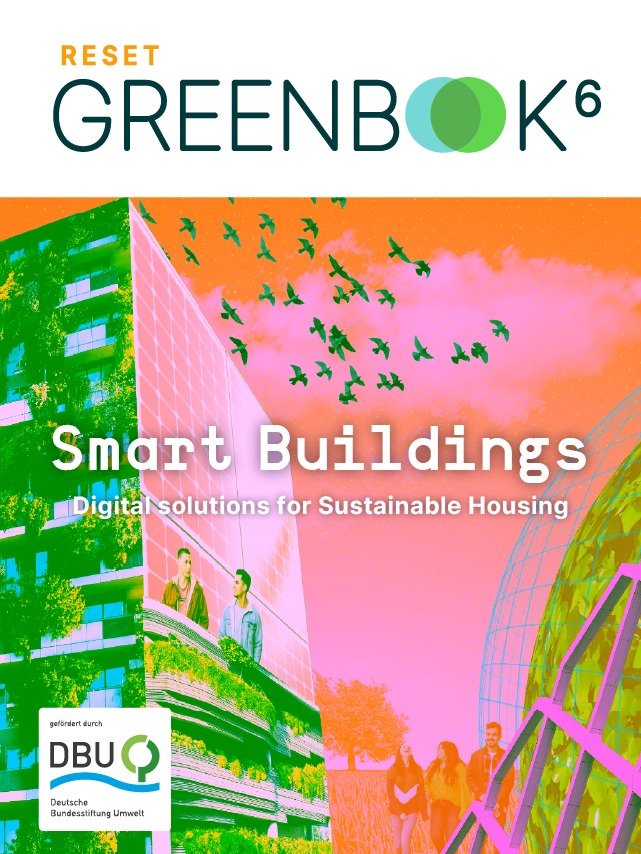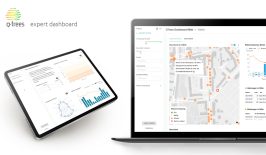Over the last 30 years, our planet has lost over 10 percent of its forests. This accounts for 420 million hectares. Although the decline has shown signs of slowing and the drive for forest conservation has grown, many of the efforts companies go to to prove their support for deforestation are more smoke and mirrors than actors of effectual change.
Alarming recent investigations reveal that over 90 percent of rainforest offset credits are, in fact, bogus, with companies using the carbon market to purchase offsets to claim their products are “carbon neutral”. These so-called “phantom credits” mean that environmental offsets are often wildly exaggerated in corporate reports.
Following an evaluation of submissions for the 2022 IRCAI Global Top 100, IRCAI identified ten projects which aim to tackle this issue. One of them is Pachama, a California-based climate tech company that employs AI and remote sensing technologies to support funding for forest reforestation, restoration and conservation initiatives.
The issue with offsets
Moved to action after witnessing wide-scale deforestation and the early impacts of climate change, the Argentinian founders’ mission was to take advantage of market mechanisms in order to build a sustainable economy capable of solving, or at the very least, drastically reducing the impacts of climate change.
Buildings are a CO2 heavyweight: the construction, heating, cooling and disposal of our homes accounts for around 40 percent of Germany’s CO2 emissions. We will only achieve our climate goals if these emissions are massively reduced.
But how can we achieve the sustainable transformation of buildings and what role do digital solutions play in this? The RESET Greenbook provides answers: Building transformation – intelligently transforming houses and neighbourhoods.
What are carbon offsets?
Put simply, a carbon offset is a credit that a person or organisation can buy to decrease its carbon footprint. When the number of carbon offset credits a comapny or individual buys or obtains is equal to their carbon footprint, they are considered carbon-neutral.
The crux of the issue Pachama is trying to solve is that most people don’t understand how carbon offsetting actually works. Many companies claiming to e.g. “offset carbon with every purchase” exploit this for their own financial or reputational gain. Governments, organisations, and corporations worldwide, spanning industries such as oil and gas, airlines, fast food, fashion, technology, art and academia, have all adopted the multibillion-dollar voluntary carbon trading sector. However, instead of reporting actual carbon savings, many carbon projects rely on self-generated predictions of reduced deforestation. Their ‘effectiveness’ is calculated on predictions of how much forest would have been destroyed had the projects not been funded. In many cases, prediction methods are far too simplistic and rely on outdated information, according to Andreas Kontoleon at the University of Cambridge.
“These [carbon] payments are not doing what they’re claiming to be doing, in terms of changing deforestation rates in a statistically significant way compared to a counterfactual.”
A majority of offset projects are likely bogus according to a recent study
A 2023 investigation led by the Guardian in partnership with Corporate Accountability, a transnational non-profit watchdog, analysed the top 50 emission offset projects. All of which are renowned for their significant sales of carbon credits in the global market.
According to their findings:
- Among the top 50 emission offset projects, a substantial 78 percent (39 projects) were found to be likely ineffective or worthless due to various inherent deficiencies that undermine their promised emission reductions.
- An additional 16 percent (eight projects) were flagged as problematic, with evidence suggesting potential fundamental flaws, indicating they might have little to no value based on the applied classification system.
- For the remaining 6 percent (three projects), it was not possible to definitively determine their efficacy due to the lack of sufficient publicly available, independent information to accurately evaluate the credits and their claimed climate benefits.
Overall, the investigation revealed that a significant 937 million GBP (1.1 billion EUR) worth of carbon credits have been traded from projects classified as likely ineffective or worthless, with an additional 400 million GBP (458 million EUR) worth of credits potentially falling into the same category.
What are the implications of bogus or ‘phantom’ carbon credits?
The implications of bogus carbon credits can be far-reaching. Their impact is detrimental to both the environment and the global efforts to combat climate change in several ways:
1. Undermining genuine efforts: When companies use bogus carbon credits, they give the impression of being environmentally conscious without actually taking tangible steps to reduce their carbon footprint. This undermines the credibility of genuine efforts by other companies and organisations.
2. Delayed environmental action: If companies rely on false carbon credits, they might delay or avoid implementing necessary changes to reduce their emissions. This can lead to a continued increase in carbon emissions and hinder progress towards achieving global climate goals.
3. Ineffective carbon offsetting: Bogus or ‘phantom’ carbon credits do not represent real emissions reductions, leading to a false sense of security that carbon emissions are being adequately offset. This can result in an overestimation of the effectiveness of carbon offsetting programs, leading to continued environmental degradation.
4. Financial loss: Investors and businesses that purchase these bogus carbon credits may face financial losses if the purchased credits are invalidated or found to be fraudulent. This can lead to a loss of trust in the carbon credit market and discourage genuine investment in legitimate carbon offset projects.
To address these implications, it is essential to enforce stricter regulations and verification processes for carbon credits. Promoting transparency in reporting and encouraging the use of reliable and credible carbon offsetting mechanisms is key. Investing in innovative technologies like AI, as demonstrated by companies like Pachama, can help in ensuring the credibility and effectiveness of reforestation and carbon offset projects.
AI solutions could be key
What Pachama’s platform does is incentivise landowners to increase their forest protection activities, and with it emission reduction, through the utilisation of AI tools. These tools are set up to track project performance and bring otherwise unprecedented accuracy to carbon credit issuance. Their models integrate satellite data, field plots and 3D airborne lidar imaging in order to map forest carbon over entire regions. Their tools then provide this comprehensive, high-quality data to landowners, corporations and governing bodies. By surfacing this data in one intuitive portal, companies get complete transparency into the ongoing health and impact of their project. So, no more getting away with phantom crediting.
AI’s applications for deforestation
AI has been increasingly used in various fields to address complex challenges, including reforestation. Some AI solutions for reforestation include:
- Automated Seedling Planting: AI-driven robots equipped with computer vision technology can efficiently plant a large number of trees by identifying suitable planting spots and ensuring proper spacing.
- Predictive Analytics for Planting Locations: AI can analyse various data sets such as soil quality, climate conditions, and topography to predict the best locations for planting trees, thereby maximising the chances of successful reforestation.
- Drone monitoring and analysis: Drones equipped with AI-powered imaging technology can monitor large areas of land to assess the health and growth of trees. This data can help identify areas that require more attention and resources for successful reforestation.
- Forest fire prediction and prevention: AI algorithms can analyse historical data on forest fires and environmental conditions to predict areas at high risk of wildfires. This information can help authorities take preventive measures to protect existing forests and plan reforestation efforts in fire-prone regions.
- Monitoring and combatting illegal logging: AI-powered systems can monitor and analyse satellite imagery and other data sources to detect and prevent illegal logging activities, thereby protecting existing forests and ensuring the success of reforestation efforts.
- Precision forestry management: AI can assist in managing forests more efficiently by analysing data related to tree growth, species diversity and ecosystem health. This data can help forest managers make informed decisions about which areas need attention and which strategies would be most effective for reforestation.
- Climate change impact analysis: AI models can analyse climate change data and its potential impact on different forest ecosystems. This information can help in planning reforestation strategies that are resilient to the changing climate and can contribute to long-term sustainability.
By fostering a deeper understanding of forest resources and management practices, Pachama’s mission is to facilitate sustainable growth and regeneration for both communities and the environment. Working collaboratively with landowners and guided by scientific insights, the platform also strives to identify optimal areas for strategic investment in reforestation, restoration and conservation efforts.
They hope that this technology will soon be able to unlock satellite-based carbon mapping across the entire planet, and help to improve the trustworthiness and effectiveness of carbon offsetting, expelling the phantoms once and for all.










